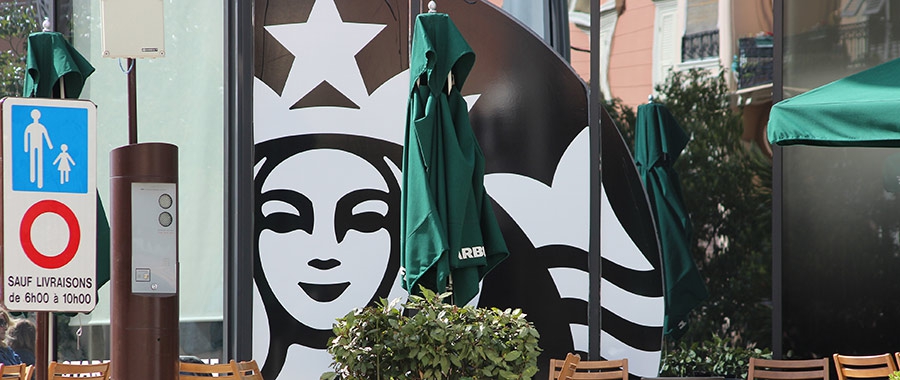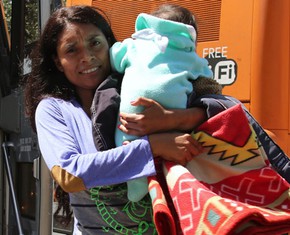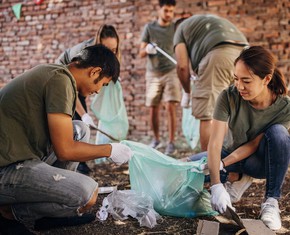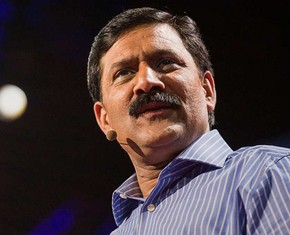The views expressed in our content reflect individual perspectives and do not represent the authoritative views of the Baha'i Faith.
Here’s the second part of my open letter about racism and becoming “color brave” to the CEO of Starbucks:
Dear Mr. Johnson:
I hope you got a chance to read my previous open letter to you. In this letter, I offer the idea that achieving the Baha’i principle of race amity is an ideal way to be “color brave”—the phrase coined by your board member, Mellody Hobson. She said that becoming “color brave” is more than being forthright and candid about the problem of racial bias and discrimination:
So I think it’s time for us to be comfortable with the uncomfortable conversation about race: black, white, Asian, Hispanic, male, female, all of us, if we truly believe in equal rights and equal opportunity in America, I think we have to have real conversations about this issue. We cannot afford to be color blind. We have to be color brave. We have to be willing, as teachers and parents and entrepreneurs and scientists, we have to be willing to have proactive conversations about race with honesty and understanding and courage, not because it’s the right thing to do, but because it’s the smart thing to do, because our businesses and our products and our science, our research, all of that will be better with greater diversity. – Mellody Hobson, “Color blind or color brave?” (TED2014 | March 2014) (at 7:30 in the video).
The Oxford English Dictionary defines “brave” this way: “Of persons and their attributes: Courageous, daring, intrepid, stout-hearted (as a good quality).” Here’s Ms. Hobson’s operational, pragmatic advice on how to have courage, daring and resourcefulness when it comes to being color brave:
Now I’m sure you’re sitting here and you’re saying, I don’t run a cable company, I don’t run an investment firm, I am not a dairy farmer. What can I do? And I’m telling you, you can be color brave. If you’re part of a hiring process or an admissions process, you can be color brave. If you are trying to solve a really hard problem, you can speak up and be color brave. Now I know people will say, but that doesn’t add up to a lot, but I’m actually asking you to do something really simple: observe your environment, at work, at school, at home. I’m asking you to look at the people around you purposefully and intentionally. Invite people into your life who don’t look like you, don’t think like you, don’t act like you, don’t come from where you come from, and you might find that they will challenge your assumptions and make you grow as a person. You might get powerful new insights from these individuals, or, like my husband, who happens to be white, you might learn that black people, men, women, children, we use body lotion every single day. – Ibid. (at 10:03 in the video).
I’m not sure how practical this advice is in a Starbucks business setting. But, in a social setting, it is absolutely wonderful advice. Acting on this advice will allow each and every one of us to better cross the racial divide. So becoming color brave is more than being open and honest about the problems of racial bias and discrimination. It’s also about putting into practice what the Baha’is and others during the Jim Crow era called “race amity.” In other words, each of us can and should create race amity—real friendship between people—whether in the workplace or, as Starbucks puts it, in “the third place.”
Every problem invites a solution. So, in every color brave, candid conversation about race, each problem raised invites its own proposed solution. After all, the purpose in discussing problems is to raise awareness and to explore possible remedies. Each and every solution may not be practical or successful. But each good idea merits trying out that idea, even if only experimentally, to see if the idea actually works in practice.
America, as well as the rest of the world, is a great social laboratory. With this in mind, part of being color brave is not only to be totally proactive in being open and honest about the problems of racial bias and discrimination, but to propose and to try out solutions.
Legislation and business ethics can only go so far. What is needed is a change of heart, a new orientation, and a fresh commitment. As part and parcel of the solution, race amity, interracial harmony, and ideal race relations should be considered and encouraged. In fact, it may take as much, if not more courage, to actually reach out in true friendship across the racial divide, rather than just talking about it candidly.
Here is where the Baha’i ethic of unity can serve as a useful resource. Understanding and applying the Baha’i teachings on race relations involves no commitment to become a Baha’i. The purpose of the Baha’i Faith, after all, is to unite the world. Promoting ideal race relations serves that sacred purpose, which has much in common with Starbucks’ current mission of fostering a welcoming business environment for everyone.
Obviously Starbucks is a business—but you’re now pursuing an admirable business ethic in what may be considered a form of progressive social leadership. I applaud Starbucks for taking bold initiatives in addressing the problem of racial bias. I also commend Starbucks for making its training materials available online.
So, Mr. Johnson, in this open letter, I want to invite you to explore the Baha’i teachings on race unity, and on unity in general, and to revisit the idea of putting a quote about unity on a Starbucks cup, such as one or more of the following:
Close your eyes to racial differences, and welcome all with the light of oneness. – Baha’u’llah, The Advent of Divine Justice, p. 137.
In the estimation of God there is no distinction of color; all are one in the color and beauty of servitude to him. Color is not important; the heart is all-important. – Abdu’l-Baha, Baha’i World Faith, p. 267.
The diversity in the human family should be the cause of love and harmony, as it is in music where many different notes blend together in the making of a perfect chord. – Abdu’l-Baha, Paris Talks, p. 53.
If you meet those of a different race and color from yourself, do not mistrust them, and withdraw yourself into your shell of conventionality, but rather be glad and show them kindness. – Ibid., p. 51.
So being color brave also means being color befriending.
















Comments
Sign in or create an account
Continue with Googleor